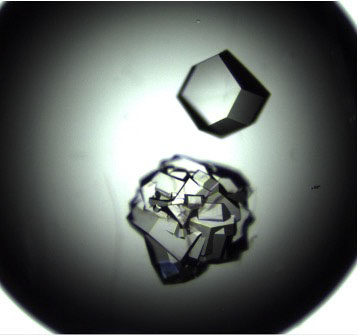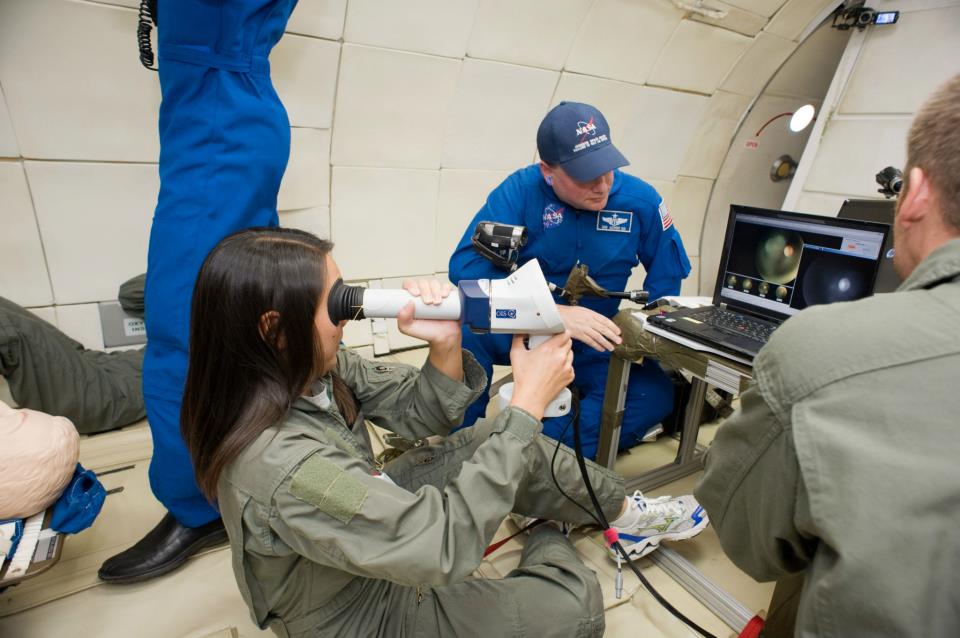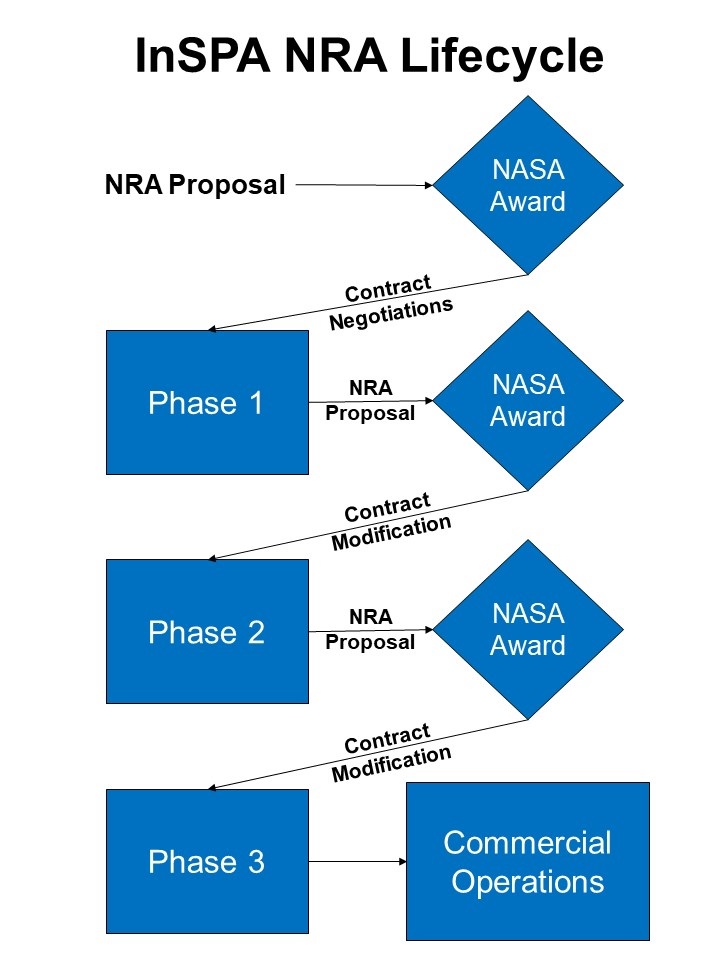4 Min Read NASA to Embrace Commercial Sector, Fly Out Legacy Relay Fleet An artist's concept of commercial and NASA space relays. Credits: NASA/Morgan Johnson NASA is one step closer on its transition to using commercially owned and operated satellite communications services to provide future near-Earth space missions with increased service coverage, availability, and accelerated science and data delivery. As of Friday, Nov. 8, the agency’s legacy TDRS (Tracking and Data Relay Satellite) system, as part of the Near Space Network, will support only existing missions while new missions will…
Read MoreTag: The Future of Commercial Space
In Space Production Applications News
Technological innovations make headlines every day, and NASA’s In Space Production Applications (InSPA) Portfolio of awards are driving these innovations into the future. InSPA awards help U.S. companies demonstrate in-space manufacturing of their products and move them to market, propelling U.S. industry toward the development of a sustainable, scalable, and profitable non-NASA demand for services and products manufactured in the microgravity environment of low Earth orbit for use on Earth. Latest News: A Meta-Analysis of Semiconductor Materials Fabricated in Microgravity (June 26, 2024) ISSRDC Announces “Steps to Space” Session to Educate Future…
Read MoreLakita Lowe: Leading Space Commercialization Innovations and Fostering STEM Engagement
Lakita Lowe is at the forefront of space commercialization, seamlessly merging scientific expertise with visionary leadership to propel NASA’s commercial ambitions and ignite a passion for STEM in future generations. As a project integrator for NASA’s Commercial Low Earth Orbit Development Program (CLDP), Lowe leverages her extensive background in scientific research and biomedical studies to bridge the gap between science and commercial innovation. Lowe recently supported both planning and real-time operations contributing to the successful completion of the Axiom-3 private astronaut mission which launched in January 2024 and is gearing…
Read MoreEleasa Kim: Pioneering CLDP Payload Operations and Cultural Integration
Eleasa Kim, stationed at NASA’s Marshall Space Flight Center, leads the Commercial Low Earth Orbit Development Program (CLDP) payload operations at Johnson Space Center, with 18 years of mission support under her belt. Her roles have included biomedical engineer flight controller, payload safety engineer for Artemis I, planning and analysis branch operations discipline lead, and glovebox integration engineer, with each enriching her understanding of engineering, safety, and leadership. Kim is currently working to ensure a smooth transition to commercial space operations for the science being conducted in microgravity for the…
Read MoreCommercial Space Frequently Asked Questions
An orbital sunrise is pictured from the International Space Station as it orbited 264 miles above Shenzhen, China. NASA NASA supports a robust commercial space economy that advances American industry and promotes technological discovery through in-space work and research. American companies will continue to play an essential role in establishing a sustainable presence in space. Answers to frequently asked questions about the low Earth orbit economy, private astronaut missions, and collaborating with NASA’s Commercial Low Earth Orbit Development Program are located on this page. Low Earth Orbit FAQs What is…
Read MoreNASA to Participate in Next Private Astronaut Mission News Conference
The astronaut crew for Axiom Mission 3 (Ax-3) to the International Space Station. From left to right, Ax-3 crew members are Michael López-Alegría, Axiom Space’s chief astronaut, Walter Villadei, an Italian Air Force colonel and pilot for the mission, Mission Specialist Alper Gezeravci from Türkiye, and ESA project astronaut Marcus Wandt. Credits: Axiom Space NASA experts will join a virtual news conference hosted by Axiom Space at 10 a.m. EST Wednesday, Dec. 13, to discuss the launch of Axiom Mission 3 (Ax-3), the third private astronaut mission to the International…
Read MoreInSPA Inter-Agency Collaboration Goals
High quality production photos of Robonaut (R2) in Building 14 EMI chamber and R1/EMU photos in Building 32 – Robonaut Lab. Photo Date: June 1, 2010. Location: Building 14 – EMI Chamber/Building 32 – Robonaut Lab. NASA / Robert Markowitz & Bill Stafford NASA knows it takes a village to make commercial manufacturing in space a reality. NASA is collaborating with experts from industry, academia and other U.S. Government agencies on the technologies in play with the InSPA portfolio. By joining forces with these experts, NASA can better support its…
Read MoreNASA Implementation Strategy for In Space Production Applications
NASA’s In Space Production Applications (InSPA) implementation strategy consists of a multi-phase award process to demonstrate proof-of-concept, advance to high production quality, and ultimately to achieve scalability on a commercial low Earth orbit (LEO) destination or platform. InSPA seeks to identify awardees who propose promising manufacturing efforts in microgravity that will invigorate markets on Earth. These InSPA awards help the selected companies raise the technological readiness level of their products and move them to market, propelling U.S. industry toward the development of a sustainable, scalable, and profitable non-NASA demand for…
Read MoreIn Space Production: Applications Within Reach
In microgravity, crystals grow more slowly, but the molecules have time to align more perfectly on the surface of the crystal, which returns much better research outcomes. NASA After four decades of microgravity research, NASA and the ISS National Lab have identified numerous applications that are within reach for NASA’s In Space Production Applications (InSPA) portfolio. Uniform crystals, semiconductors, specialized glass and optical fibers are just a few of the many advanced materials that can benefit from production in microgravity. Artificial retinas, drug delivery medical devices, as well as the…
Read MoreWhat is In Space Production Applications?
NASA supports In Space Production Applications (InSPA) awards to help the selected companies raise the technological readiness level of their products and move them to market, propelling U.S. industry toward the development of a sustainable, scalable, and profitable non-NASA demand for services and products in low-Earth orbit. These commercialization awards provide opportunities for NASA to reduce its future costs in LEO enabling deep-space missions farther from Earth, including the Moon and Mars. NASA is leading commercial LEO development efforts to stimulate non-NASA demand for commercially owned and operated orbital destinations from…
Read More







